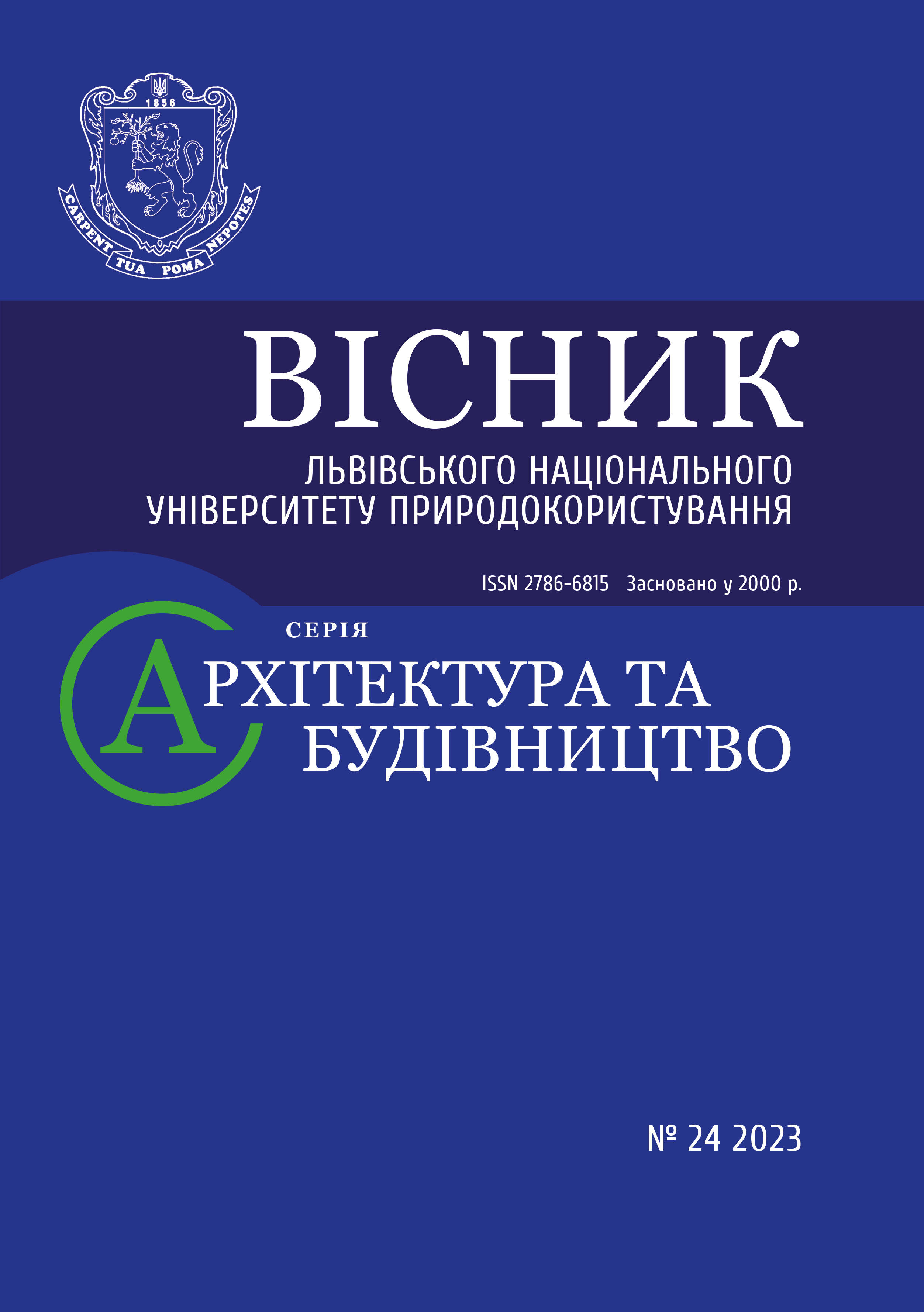USING THE STRATEGIC SATELLITE IMAGERY METHODS FOR AGRICULTURAL LAND MONITORING
DOI:
https://doi.org/10.31734/architecture2023.24.209Keywords:
land fund, rational use, agrolandscapes, satellite imageryAbstract
With the development of society and the increasing impact of human activities on the Earth's ecological system, it is necessary to find new methods of managing natural resources while also satisfying human needs.
Nowadays, space imagery is the primary method of obtaining information through various carriers, with the support of survey equipment. This data is widely used in cartography to solve problems in all areas of science and technology, as well as to create geographic information systems. Every year, the volume of products related to mapping and geoinformation is expanding, and new areas for using this information are emerging. For several decades, space imagery has been characterized by acquiring aerial data with very high spatial resolution (<1 m), an increase in spectral resolution of imaging systems, and the implementation of spectral imagery.
A remote sensing model is a system that receives and converts input signals of the electromagnetic spectrum into output signals that form images or point source data about objects on the ground. In recent decades, remote sensing has been particularly useful for obtaining informative data about the earth's surface. Consequently, remote sensing can provide natural characteristics of soil types, vegetation, and more.
The information obtained through aerospace remote sensing is widely used in many countries around the world for finding minerals, assessing the rural potential of regions and countries, analyzing agricultural land, identifying types and species of crops, forecasting yields, and monitoring soils and pastures.
The soil science crisis in Ukraine was caused by the administrative-command economy in the past.
References
Antonenko V. S. Agrometeorological monitoring of cropping area in Ukraine by applying aerospace methods: manual. Kyiv: «ArtEk», 2002. 308 р.
Assessment of the Efficiency of Multitemporal C-Band Radarsat-2 Intensity and Landsat-8 Surface Reflectance Satellite Imagery for Crop Classification in Ukraine / S. Skakun, N. Kussul, A. Shelestov, M. Lavreniuk, O. Kussul. IEEE Journal of Selected Topics in Applied Earth Observations and Remote Sensing. 2015. Vol. 9, No 8. P. 3712–3719. doi: 10.1109/JSTARS.2015.2454297.
Bakan H. M., Kussul N. N. Fuzzy ellipsoidal filtering algorithm of static object state. Management problems and informatics (Automatics). 1996. 5. P. 77–92.
Borian Ch. M. Monitoring of the US agriculture: the US Department of Agriculture, National Agricultural Statistics Service. Cropland Data Layer Program C. 2011. Vol. 26, No 5. P. 341–358.
Burshtynska H. V., Stankevych S. A. Aerospace Shooting System: textbook. Lviv: Lviv Polytechnic Publishing House, 316 р.
Chang J. Corn and soybean mapping in the United States using MODIS time-series data sets. Agronomy Journal. 2007. Vol. 99, No 6. P. 1654–1664.
Classification and change detection using Landsat TM data: when and how to correct atmospheric effects? / C. Song, C. E. Woodcock, K. C. Seto, M. P. Lenney, Macomber S. A. Remote sensing of Environment. 2001. 75 (2). Р. 230–244.
Desham B. N. Towards crop type classification by using only operational: comparison of a traditional decision tree with a random forest classifier. Canadian Journal of Remote Sensing. 2012. Vol. 38, No 1. P. 60–68.
Dorozhynskyi O. L., Burshtynska H. V., Hlotov V. M. Geomatics in environmental monitoring and assessment of threatening situations: monograph. Lviv: Lviv Polytechnic Publishing House, 2016. 400 р.
Economic monitoring of Land using satellite telecommunication systems and networks / Ye. V. Havrylko (Ed.). Communication. 2014. No 5. P. 3–5.
Fisette T. Annual Space-Based Crop Inventory for Canada. 2009–2014. P. 5095–5098. doi: 10.1109 / IGARSS.2014.6947643.
Fisette T. Methodology for a Canadian agricultural land cover classification. 1 st International Conference on Object-based Image Analysis, Salzburg University, Austria, 4–5 July. 2006. Salzburg, 2006.
Hulko O. R., Perovych L. M, Ludchak O. Yu. Analysis of world experience in the use of space-borne methods for monitoring agricultural land use. Modern achievements of geodesic science and production: a collection of scientific works of the Western geodesic society UTGK. Lviv, 2018. 1 (35). P. 64–70.
In Grid and Cloud Database Management Grid / S. Fiore, G. Aloisio (Eds.) Springer. 2011. Р. 279–306.
Kolotii A. Comparison of biophysical and satellite predictors for wheat yield forecasting in Ukraine. International Archives of the Photogrammetry, Remote Sensing & Spatial Information Sciences. 2015.Vol. XL-7/W3. P. 39–44.
Maxwell S. K. Use of land surface remotely sensed satellite and airborne data for environmental exposure assessment in cancer research. Journal of Exposure Science and Environmental Epidemiology. 2010. Vol. 20, No 2. P. 176–185.
Pal M., Mather P. M. Assessment of the effectiveness of the decision tree methods for land cover classification. Remote Sensing of Environment. 2003. Vol. 86, No 4. P. 554–559.
Shelestov A. Yu., Yailimov B. Ya. State of the Monitoring of Actual Use of Agricultural Land in Leading Countries Based on Satellite Data. Ukrainian Earth Remote Sensing Magazine. 2017. No 12. P. 59–66.
Syrotenko O. B. Selective survey of agricultural crops. Regional meeting «Opportunities of remote sensing of the Earth and geoinformation technologies in solving problems of Kyiv region". Kyiv, 20–21 March 2007. Kyiv, 2007.
Zosimovich M. V. Remote ecological monitoring. Methodical manual. Zhytomyr, 2006. P. 117.


